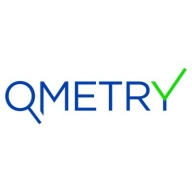Range of supported technology expands, but odd IDE design still leave newbies and pro users alike disappointed.There are always new features and more support for new and legacy technology architectures with each release. But the bad news is a growing list of long-standing issues with the product rarely gets addressed. While I have a larger list of issues that make day to day work harder than it needs to be, these are the Top Five that I do wish would capture someone's attention in upcoming releases. All hit the tool's ROI pretty hard. #1) Jump To Source - The Silent Code Killer: In older QTP versions a double-click on any function in the Toolbox window would take the developer to the function's source code, while a drag from the Toolbox would add it to the code window. Since 12.0 a double-click on a function in UFT's Toolbox window now ADDS the function (same as drag) to the Code window - to whatever random location the cursor happens to be at - even if it is off screen, and it will replace sections of code if it is highlighted. We are not sure what the intention was, but our Best Practice is to avoid the Toolbox window entirely to avoid the real danger of losing days of work and needless bug hunts. Now Jump to Source is not all bad. A right-click on any function called from a Script takes us to the code source, which is great! But it only half works: in a Library, only for functions declared within the same library. Our advance designs have well over twelve libs so a whole lot of extra time is spent searching the entire project for a function's source on a daily basis. Lastly, while we can add custom methods to object, a Jump To Source from these methods is long overdue. So again our only option is to search the entire project. #2) Object Spy: It needs to have multiple instances so that you can compare multiple object properties side-by-side. It lacks a Refresh button, so that automation engineers can quickly identify the property changes of visible and invisible objects. Or HP could skip to option #3... #3) Add RegEx integer support for .Height or .Width object properties when retrieving object collections. If this were possible, our framework could return collections that contain only visible objects that have a .height property greater that zero. (Side Note: the .Visible property has not returned a False value for us in nearly five years - a recent developer decision, not a product issue) Eliminating the need to separate the non-visible objects from visible ones would decrease execution time dramatically. (Another side note: Our experiments to RegEx integer-based .Height properties found that we could get a collection of just invisible objects. Exactly the opposite of what we needed.) #4) The shortcut to a treasure trove of sample code in the latest release 14.0 has been inexplicably removed. This impeeds new users from having an easy time learning the tool's advanced capability. In fact the only users daring enough to go find it now will be you who is reading this review. #5) Forced Return to Script Code. This again is a no-brainer design flaw. Let's say we run a script and throw an error somewhere deep in our function library. Hey it happens. In prior QTP versions when the Stop button would be clicked the tool would leave you right there at the point where the error occurred to fix. Now in recent releases, UFT always takes us back to the main Script, far from that code area that needed immediate attention.



